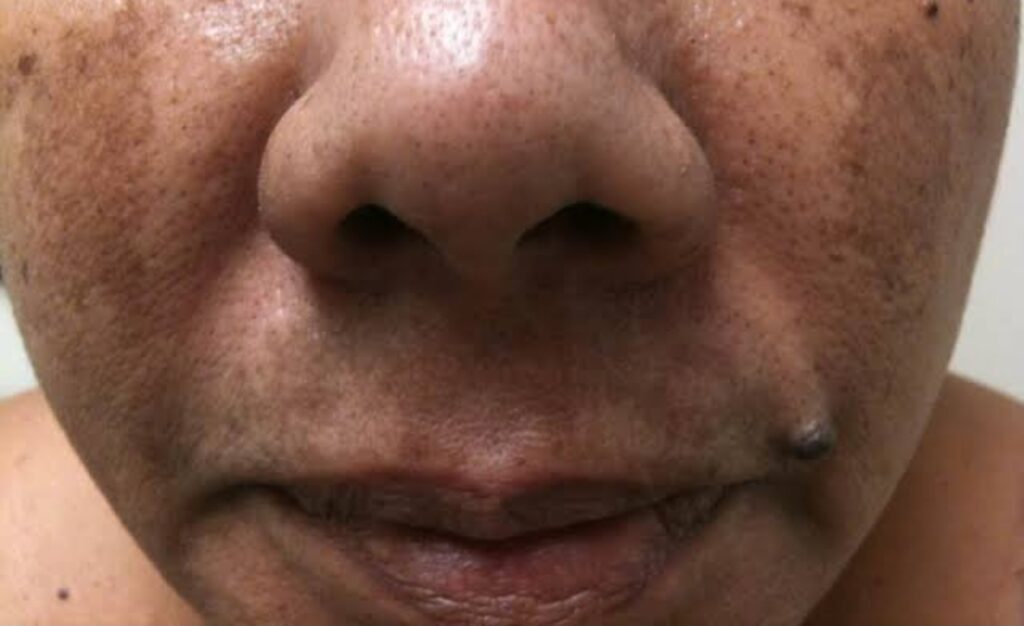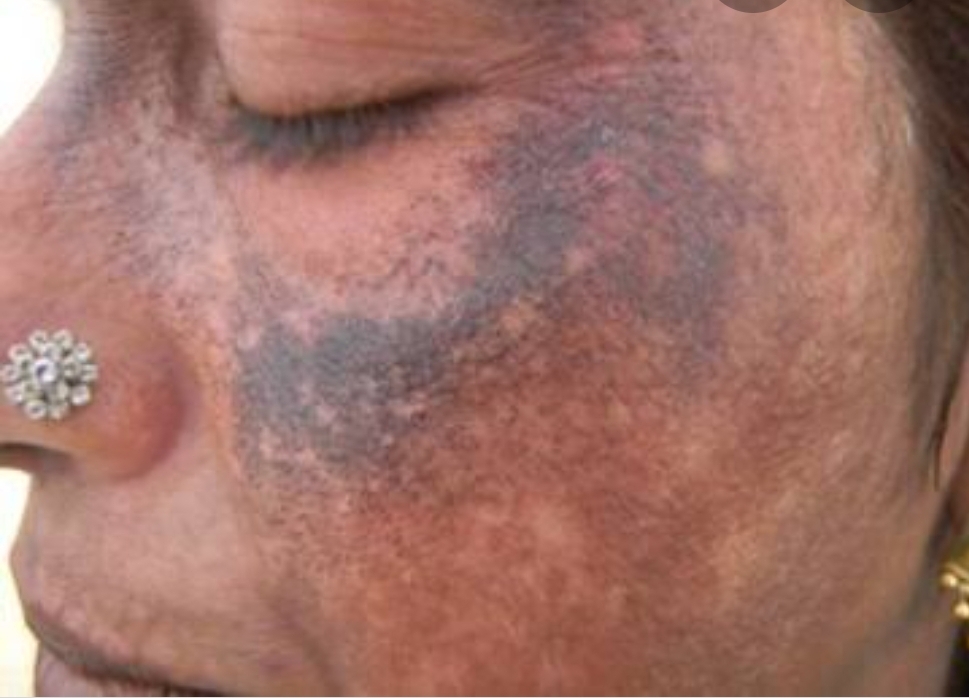Ever heard of the term “exogenous onchronosis?”
Exogenous – Introduced from outside
Onchronosis – refers to a blue-black deposition in the second layer of the skin called the dermis. Recall that I’ve mentioned before that the dermis is the second deeper layer of the skin made up of collagen that gives it tensile strength.
A lot of people are desirous of lighter skin because of several reasons ranging from partner request, personal choice and sometimes to boost their self-confidence (because they think fairer skin is more beautiful).
I used to think the desire for fairer skin was more prevalent in blacks. After spending some time abroad, I have since realized that it is not limited to blacks alone.
One of the common ingredients that is used in skin bleaching is hydroquinone. Several countries have banned hydroquinone because of its side effects. However, there is still a medically acceptable level of hydroquinone that can be used in treating hyperpigmentation on the skin. This must be prescribed by a dermatologist and cannot be gotten over the counter.
Some individuals get ahold of hydroquinone (either low concentration or higher than normal) and then use it for longer than acceptable periods. Some creams have hydroquinone in them and is not listed amongst the ingredients.
Most people in this part of the world also use bleaching agents without practicing any form of sun protection.
With hydroquinone containing creams, the user is initially happy as they’re getting the desired bleaching effect and they start to ‘glow’.
The next thing is they increase the use of the cream to get more of the desired effect. After using these creams for about 6 months to 1 year, they notice some grayish black ⚫ hyperpigmentation on their face, neck and temples. They run 🏃♀️🏃 to their ‘cream mixer’ who makes more potent hydroquinone containing creams for them. Three months later, the pigmentation is well settled and is even more now. They are now frantically going from one cream mixer to another to help them with the pigmentation who gives them yet another cream….and the vicious cycle continues. Remember I mentioned they’re not practicing any sun protection.
With prolonged use of hydroquinone containing creams (or phenol products), pigment gets deposited deep in the dermis – aka exogenous onchronosis. And the more it is used, the more the increase in the grayish black pigmentation.
Some inadvertently get into this situation by buying some over the counter creams that has hydroquinone as a hidden ingredient.
Management? You must stop the offending agent. Without that, no progress can be made.
Rome wasn’t built in a day and this pigment was deposited gradually. You must be patient. Any ‘get cured’ fast will do the exact opposite.
The pigment is in the dermis and it is way tougher to remove ‘stains’ on the dermis compared to the epidermis (the upper layer of the skin).
Sunscreen with SPF 50 is a necessity and this must be reapplied every 2 to 3 hours in addition to other sun protective measures like wearing wide brimmed hats and staying away from the sun between the hours of 10am to 3pm.
Creams with substances like Vitamin C&E, Niacinamide or azelaic acid can be applied lightly in the morning prior to sunscreen application. A retinol cream can also be used at night. A gentle chemical peel (procedure done by a licensed aesthetician or dermatologist) can also be done.
The most effective treatment is however LASER (in addition to sun protection) which is expensive and not readily available here in Nigeria.

Before you embark on the use of hydroquinone creams….please read this. Remember how easy it is to destroy the skin, but its repair can take such a long time and may not even go back to pre-damage state.
We are all beautiful in our different shades of color. And unique in our different ways. Beauty is all about confidence…and if you’ve got that, you glow from within.
Remember, actions have consequences….which may be unpleasant. Be kind to your skin and it will take care of you.
P.S – A condition that can look like exogenous onchronosis (EO) especially in the early stage of EO is melasma (which I have written about before). However, melasma is a lighter pigmentation not grayish black, may start in pregnancy, there may be a use of oral contraceptives…but most importantly, there will be no history of use of hydroquinone containing creams.

Why not head on to my Instagram page @skinandall_ to watch the video I just put up explaining exogenous onchronosis? 😊
Featured image on this post from Egyptian journal of dermatology via Google images.


I really wish I could pay a translator to transcribe this beautiful piece in Pidgin language to enable a wider reach.
If you know anyone, kindly refer. All copyright protocol will be observed.
For this, our generation remain grateful.
Awww. Thank you so much sis! I may do a pidgin version but in video format so it can get more reach. You encourage me to write more always!
It’s a shame you don’t have a donate button! I’d without a
doubt donate to this excellent blog! I suppose for
now i’ll settle for bookmarking and adding your RSS feed to my Google account.
I look forward to fresh updates and will share this website with my Facebook group.
Talk soon!
Now that you mention it, I would look into adding that! Thank you so much for your kind words!